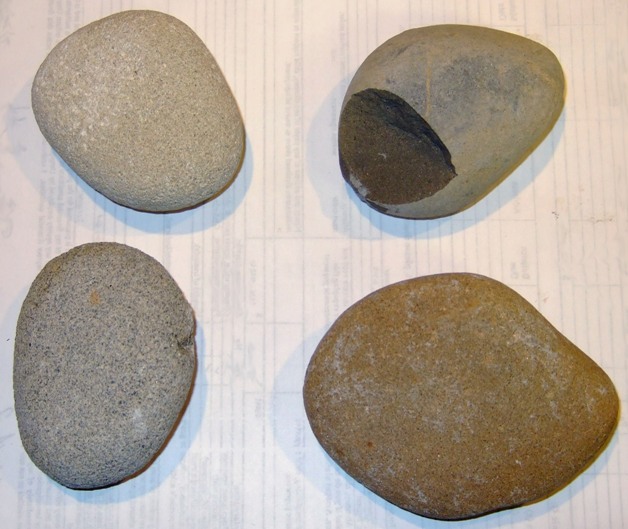(sorry about the broken picture link - fixed it 8/15/09)
When I took my first knapping class, I was given some sandstone from <can't say>, and was told it represented some of the finest stone for knapping. I did some research which suggested the sandstone from <can't say> was "calcareous sandstone". A few minutes of googling, and I found some maps showing outcrops on the Oregon coast.
Here are typical examples of what I have found on the Oregon coast since:

From worst to best. The upper right stone felt like sandstone, but the gritty surface wore off in minutes, and soon thereafter broke and revealed a gray clayish interior. The lower right stone has a very classic sand look and feel, but was dry and brittle and eventually broke into bits.
The lower left stone also has a very classic sand look and feel, but the color is much brighter, and there are small shinny black specs there-in. Its proven to be a nice hammerstone. The upper left stone is even lighter in color, and has very small white/silver shinny specs there-in. It is an excellent hammerstone, and very tough.
At this point I've developed an eye for the attributes above, and I'm consistently getting the nice sandy yet very durable sandstones when I visit the coast. I dare say less than 2% of the coastal sandstone I've seen is prime, with the biggest consistent giveaway being the whiteness. No doubt the key attributes change per region/state, but taking some time to determine the attributes may yield results.
Happy stone hunting.
--SiletzSpey